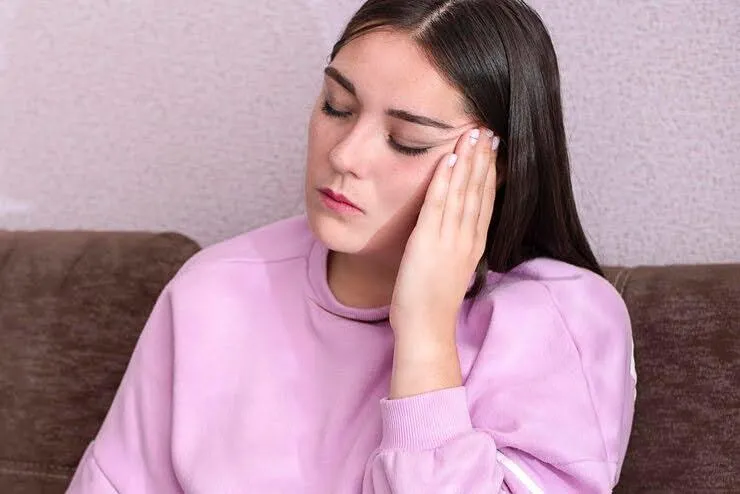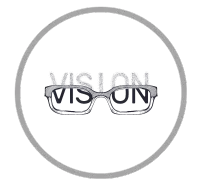Eye Health
NeuroLens Measurement Explained: What the NMD Test Reveals
FSDAVCFEBFEVSDDVFSD
FSDAVCFEBFEVSDDVFSD
FSDAVCFEBFEVSDDVFSD
Understanding the Role of Eye Misalignment
Even a small misalignment between your eyes can cause major symptoms—chronic headaches, neck pain, eye strain, and visual fatigue. These issues are often tied to Binocular Vision Dysfunction (BVD), a condition where the eyes struggle to stay aligned during activities like reading, using digital screens, or driving. When your eye muscles work too hard to compensate, they can overstimulate the trigeminal nerve, leading to pain and discomfort.
The NeuroLens measurement process helps detect and treat this hidden condition. The NMD test uses objective data to assess how your eyes align at various distances, providing a complete binocular vision evaluation for potential custom prism lens treatment.
Even a small misalignment between your eyes can cause major symptoms—chronic headaches, neck pain, eye strain, and visual fatigue. These issues are often tied to Binocular Vision Dysfunction (BVD), a condition where the eyes struggle to stay aligned during activities like reading, using digital screens, or driving. When your eye muscles work too hard to compensate, they can overstimulate the trigeminal nerve, leading to pain and discomfort.

The NeuroLens measurement process helps detect and treat this hidden condition. The NMD test uses objective data to assess how your eyes align at various distances, providing a complete binocular vision evaluation for potential custom prism lens treatment.

What Happens During the NMD Test
The NeuroLens Measurement Device (NMD) is a quick, non-invasive test performed while you sit comfortably. During the test, you follow simple fixation targets as the device measures how your eyes align at both near and far distances. This allows your optometrist to assess whether your eyes are working too hard to maintain alignment—a common trigger for eye misalignment headaches and related discomfort.
Once your eye movements are tracked, the NMD generates a detailed report highlighting where and how your eyes deviate from proper alignment. This objective data is then used to calculate the ideal contoured prism correction, customized to suit your specific visual needs—whether you spend hours at a desk, driving, or using digital devices throughout the day.
After completing the test, you'll receive a personalized treatment plan. This often includes trial lenses featuring the custom prism correction, guidance on wearing and adapting to the lenses, and a follow-up appointment to assess comfort and symptom relief. The entire process is smooth and user-friendly—and for many patients dealing with chronic visual strain, the improvement in daily life can be dramatic and long-lasting.
Turning Test Data into Custom Lenses

NeuroLens technology offers precise vision correction through its unique contoured prism design. Unlike standard lenses that provide uniform correction, these prism lenses adjust in strength depending on your gaze direction. This means targeted relief where your eyes need it most—typically during near vision tasks such as reading, computer work, or prolonged screen use. By aligning the eyes more naturally, the lenses help reduce strain on the visual system.
Following a successful trial fitting that confirms both clarity and comfort, patients enter an adaptation period. Most individuals begin to feel noticeable improvements within a few days to a few weeks.

Common benefits include reduced eye fatigue, improved posture, and relief from jaw or neck tension. For those who continue to experience symptoms, the lenses can be fine-tuned using detailed NeuroLens calibration, ensuring optimal alignment and maximum symptom relief tailored to your visual needs.
If your symptoms return—especially after changes to your screen time or workspace—it might be time to recalibrate your NeuroLens lenses. An increase in digital device use, a new job, or more time spent driving can change how your eyes work together, affecting your binocular vision and the effectiveness of your current prism correction. These shifts mean your lenses may need adjustment to continue providing optimal relief.
To track these changes accurately, keep a two-week log recording your symptoms, daily tasks, and work conditions. This detailed record helps your optometrist make evidence-based adjustments rather than relying on guesswork. Small ergonomic changes, such as adjusting screen height, distance, or brightness, can also improve your NeuroLens treatment’s effectiveness. These tweaks can reduce eye strain and may decrease the need for stronger prism lenses, helping maintain proper eye alignment and comfort. Regular monitoring and adjustments ensure your NeuroLens lenses continue to provide the best possible visual relief over time.
When the NMD Test Suggests Alternative Treatment
Sometimes, symptoms may not stem solely from eye alignment issues. The NMD test can reveal other vision problems such as dry eye, convergence insufficiency, or tracking difficulties, each requiring specific treatments. In these cases, your doctor may recommend vision therapy, dry eye management, or specialty lenses tailored to your needs.
At Kleinwood Vision, we emphasize whole-person eye care. If your binocular vision assessment suggests a different treatment path would be more effective, our team will guide you through the process. We set clear, measurable goals and coordinate any necessary referrals to ensure your vision care plan is comprehensive and effective. Our priority is to provide personalized care that addresses all aspects of your visual health, helping you achieve the best possible outcomes and lasting relief.
How to Prepare for the NMD Test
Before your NMD test, make sure to get a good night’s rest and bring your current glasses or contact lenses. Prepare a list of symptoms you’ve been experiencing, especially those triggered by digital tasks. These details provide your doctor with important context for a thorough diagnosis.
After the test, you’ll review your results and discuss your treatment plan. If prism lenses are recommended, be ready to make small changes to your workspace, such as adjusting monitor height and lighting. These adjustments help maximize comfort during the adaptation phase.
Before your NMD test, make sure to get a good night’s rest and bring your current glasses or contact lenses. Prepare a list of symptoms you’ve been experiencing, especially those triggered by digital tasks. These details provide your doctor with important context for a thorough diagnosis.
After the test, you’ll review your results and discuss your treatment plan. If prism lenses are recommended, be ready to make small changes to your workspace, such as adjusting monitor height and lighting. These adjustments help maximize comfort during the adaptation phase.

Remember to set reminders for follow-up appointments to monitor your progress. Providing feedback during the first few weeks is crucial to ensure your lenses are working effectively and delivering the relief you need.

Remember to set reminders for follow-up appointments to monitor your progress. Providing feedback during the first few weeks is crucial to ensure your lenses are working effectively and delivering the relief you need.
Ergonomic Changes That Enhance Lens Benefits
Your workspace setup plays a crucial role in how effective your NeuroLens treatment will be. Proper monitor placement is essential for reducing strain and supporting better eye alignment. Position your monitor at arm’s length, with the top edge at or just below eye level. If you use a laptop regularly, elevate it using a stand and plug in an external keyboard. This helps promote good posture by preventing you from looking down too much, which can cause neck and eye strain. These small ergonomic changes help your eyes work more comfortably and maintain proper binocular vision throughout the day.
Controlling glare and lighting is another important factor. Use matte filters or blinds to reduce reflections on your screen, and adjust your room lighting to match your screen brightness. Consistent lighting helps minimize harsh contrasts that can increase digital eye strain. Additionally, consciously blinking and staying hydrated are essential habits to combat dryness, which can worsen eye fatigue and discomfort. Keeping your eyes moist and refreshed is key when spending long hours on digital devices.
Make sure to follow the 20-20-20 rule: every 20 minutes, look at an object 20 feet away for at least 20 seconds. This helps relax your eye muscles and reduce fatigue caused by extended close-up focus. After making these ergonomic adjustments, track your symptoms carefully to identify which changes help most.
If you continue to experience eye misalignment headaches or visual fatigue, bring photos of your workspace to your next appointment. Our team can help identify visual stressors you may not have noticed and provide personalized recommendations to optimize your environment and improve your NeuroLens treatment results.
Common Questions About the NMD and NeuroLens
How long does the test take? The NMD test usually takes just a few minutes and is completely painless. It quickly measures eye alignment without discomfort. Will this change my glasses prescription? Possibly. Many patients receive prism lenses without changes to their traditional distance or near vision correction. The prism often improves alignment without altering your current prescription.
How soon will I see results? Some patients experience relief within days, while others notice improvements over a few weeks, especially with consistent wear.

How long does the test take? The NMD test usually takes just a few minutes and is completely painless. It quickly measures eye alignment without discomfort. Will this change my glasses prescription? Possibly. Many patients receive prism lenses without changes to their traditional distance or near vision correction. The prism often improves alignment without altering your current prescription.
How soon will I see results? Some patients experience relief within days, while others notice improvements over a few weeks, especially with consistent wear.
Can I use blue-light filters with NeuroLens? Yes, combining NeuroLens with blue-light protection can provide extra relief from digital eye strain. Your doctor will guide you on the best options.
Do I need recalibration? Yes, recalibration is recommended if your tasks or symptoms change. Increased screen time, posture shifts, or a new workspace can affect eye alignment and may require adjusting your NeuroLens lenses.
Can I use blue-light filters with NeuroLens? Yes, combining NeuroLens with blue-light protection can provide extra relief from digital eye strain. Your doctor will guide you on the best options.
Do I need recalibration? Yes, recalibration is recommended if your tasks or symptoms change. Increased screen time, posture shifts, or a new workspace can affect eye alignment and may require adjusting your NeuroLens lenses.
Your Two-Week NeuroLens Adaptation Plan
Wear your new prism lenses consistently during all high-visual-demand tasks such as screen work, reading, and driving. It’s important to track your daily wear time, discomfort level, and key activities in a simple log. This helps you and your provider understand how well the lenses are working and identify any specific situations where you may experience strain or discomfort.
At your follow-up visit, bring this log along with photos of your workspace setup. These details enable your provider to fine-tune your prescription and suggest ergonomic changes if needed. Small, precise adjustments often result in significant improvements in your long-term comfort and visual performance. If you have any questions or concerns during this process, please contact us. We’re here to support you every step of the way and ensure your NeuroLens treatment delivers the best possible results.

Contact Info
Hours of Operation
Mon - Fri | 9:00 AM - 5:00 PM
Sat - Sun | Closed
Holiday Hours: We are closed for the following holidays: New Years Day, Memorial Day, Independence Day, Labor Day, Thanksgiving Day, Christmas Day
© 2025 Kleinwood Vision. All rights Reserved.


